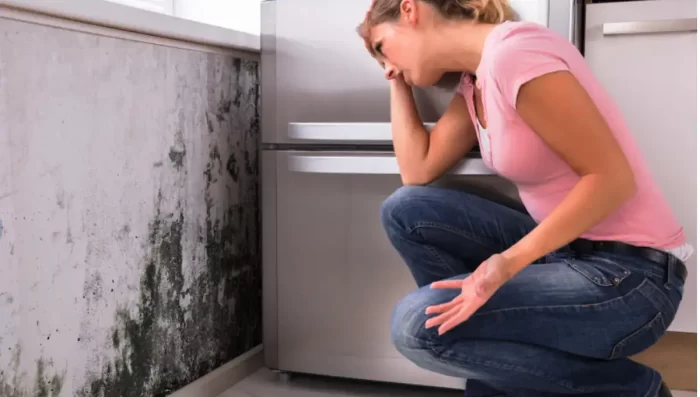Are you tired of having black mold in your home and seeking for some ideas on how to identify black mold and effectively clean them? This article will assist you if you have no idea.
The term “black mold” is a general term for the mold species Stachybotrys Chartarum. When there is an excessive buildup of moisture in the air, which often occurs in a building’s warm, humid, and damp places, black mold in homes is a prevalent problem.
Over organic surfaces like paint, wallpaper, and plaster, the instantly recognizable black fungus will proliferate. A lingering wet odor is also left behind by black mold growth.
Black mold is often a result of condensation. When warm moist air comes into contact with a surface at a lower temperature, the moisture condenses on to it.
After a while, mold will start to grow on the surface. Condensation commonly occurs on surfaces such as windows and walls, in particular external walls.
Black mold is a fungus that develops on cellulose-based materials in wet settings inside of buildings; not all black mold is dangerous.
It should be cleaned up before it spreads further because it can cause serious respiratory issues. Here is an explanation of how To Identify black mold ?
Mold comes in many different varieties in nature, most of which are not dangerous, but nobody likes mold in their house.
Mold can still induce reactions in those with allergies or compromised immune systems when it grows indoors, despite the fact that specialists claim conditions like toxic mold syndrome have no scientific basis and are simply media hype.
Molds that are toxic, such as black mold, can become dangerous if they are ignored for an extended period of time. But what exactly is black mold? Stachybotrys chartarum, a type of mold that can be exceptionally challenging to eradicate, is what most people refer to as “black mold.” It can breed in moist environments and feeds on cellulose-rich construction materials like wood and drywall.
In this professional reference, the air quality professionals at WTS examine the most typical mold species found in homes, workplaces, and other buildings, as well as which ones can be hazardous and how they affect inhabitants’ health and wellness.
The importance of being able to identify various mold types and the broad categories of allergic, pathogenic, and toxic molds are discussed in the handbook.
It looks at twelve of the most prevalent types, discusses how to identify them, identifies the ones that can be harmful, and outlines the various health impacts of exposure to each.
This guide will explain how to get rid of black mold in your home and keep it from coming back in the future.
- List of 06 Best Ways to Clean or get rid of Black Mold
- what are the common types of mold?
- how to identify black mold in your home?
- What Are the Health Effects of Black Mold?
- Concerns about black mold's safety
- How to Clean Up Black Mold?
- tools and material you will need
- Tell Us In The Comments Your Opinion How To Identify Black Mold And Get Rid of It
List of 06 Best Ways to Clean or get rid of Black Mold
This guide will explain how to get rid of black mold in your home and keep it from coming back in the future.
1. Find the Moisture Source
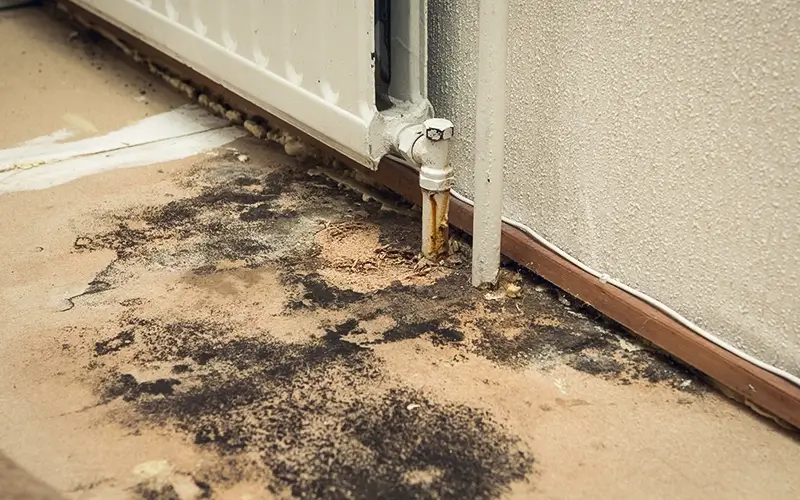
Removal of black mold is essential. But first, one needs to confirm if the mold is black. Look at the color first, then the scent. Due to the fact that black mold typically thrives in moist environments, it is usually black or even dark grey in appearance and frequently has a musty smell.
If you feel a burning or itching feeling in your throat or lungs, black mold is likely present in your home. It’s critical to get rid of black mold as soon as you become aware of it because it’s harmful and can have a negative impact on your health if left untreated.
You must do a black mold test and identify the cause before you can start any black mold treatments. It frequently happens when there is too much rain in a given location. Black mold can appear anywhere in your home, but it is most likely to do so in places like the basement that you don’t go very often.
The following are some typical moisture sources to search for:
- Faucets and fixtures: Sink, shower and bathtub faucets and fixtures that are leaking can lead to the growth of black mold over time.
- Exposed plumbing:Damaged or leaking pipes, especially in warmer temperatures, can often create black mold in areas like basements.
- Water heaters:A small leak can create black mold in your basement or water heater closet.
2. Protect Yourself
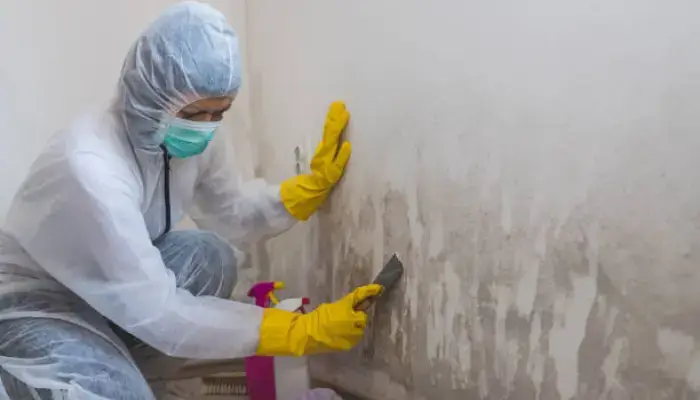
All do-it-yourself construction and home repair operations call for the appropriate attire and tools. Black mold exposure is very risky to deal with, so be sure you’re protected before you start. Here is what you require.
- Put on a respirator that is rated to protect you from spores that can cause poisoning from black mold.
- Put on garments to keep your skin covered. Long pants and a long-sleeved shirt are a must.
- Wear rubber gloves and safety goggles to protect your hands and eyes. As soon as you finish your task or take a break, throw away your gloves and purchase a new pair.
3. Prepare the Area
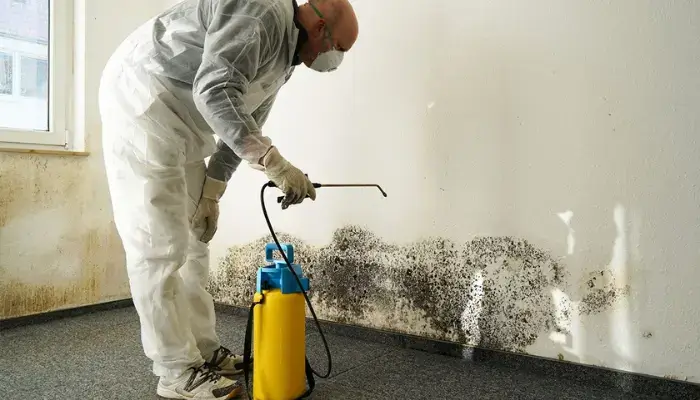
You can start preparing the area for cleaning once you’ve put on protective clothing. What you need to do is as follows:
Shut off your heating and air conditioner. While removing black mold from your home, you should refrain from moving air about.
With a heavy tarp and painter’s tape, seal any entrances or spaces that lead to the interior of your house. This will prevent the spread of mold spores within your house.
Near outdoor apertures, use an exhaust fan. To assist remove airborne spores from your house, install an exhaust fan.
4. Test the Area for Moisture
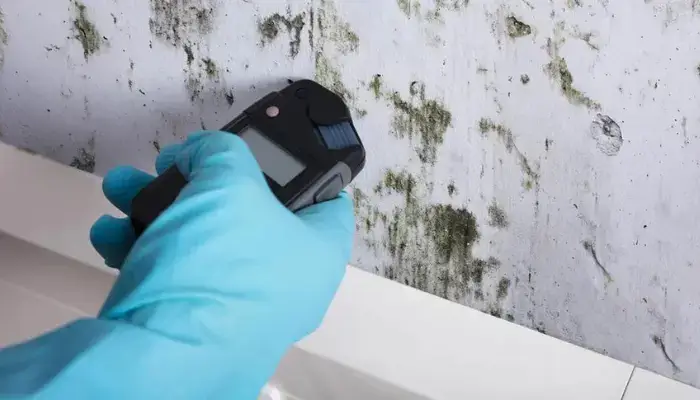
Use a moisture meter to assess the area’s moisture levels. Stay away from the black mold.
Spray some water on the area if there isn’t any moisture there. This prevents the spread of black mold spores into the atmosphere.
5. Defend the area
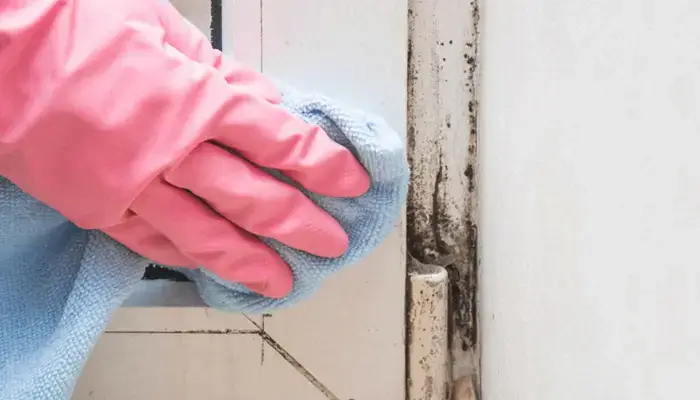
Spray a mixture of one part baking soda, five parts distilled white vinegar, and five parts water in a spray bottle to get rid of black mold naturally.
As an alternative, you may use dish soap, bleach, all-purpose cleaners, or a mold and mildew remover that is chemical-based.
Spray the mixture on the black mold and let it sit for 30 to 60 minutes.
Utilizing a sponge and your preferred solution, scrub the area where the black mold is growing.
To make sure the mold is gone, let it dry and repeat the procedure as necessary.
6. Clean Up the Area
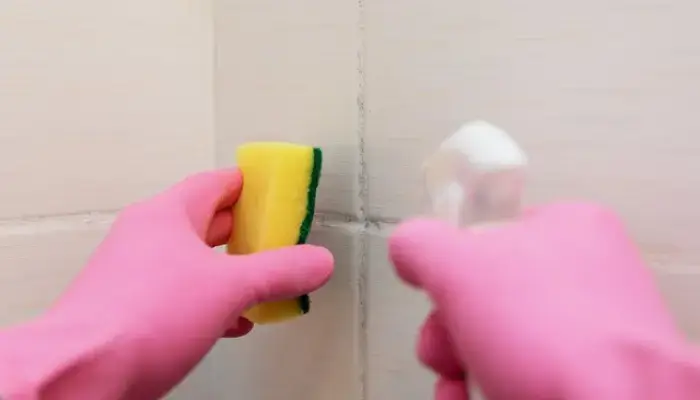
- Clear the space and get rid of anything that might have black mould in it.
- Before opening your doors, thoroughly clean the room that has black mould in it.
- Before turning off the exhaust fan, leave it running for a few hours to the entire day.
- Remember to keep your home’s moisture under control, to periodically clean and disinfect damp-prone
what are the common types of mold?
There are many distinct kinds of mold, but among them, there are a few prevalent strains that are more frequently found in homes, offices, and other workplace settings, including:
- Acremonium
- Alternaria
- Aspergillus
- Aureobasidium
- Chaetomium
- Cladosporium
- Fusarium
- Mucor
- Penicillin
- Stachybotrys (Black Mold)
- Trichoderma
- Ulocladium
how to identify black mold in your home?
Black mold, as the name implies, is often dark in color. When searching for black mold, look for circular-shaped spots that are black, dark green, or dark brown. Some black mold can also take on shades of orange or have flecks of white within it. Most of the time, black mold has a slightly furry appearance.
- Black mold typically develops on or close to building materials like drywall and wood because it feeds on cellulose.
- Dark mold loves moist environments.
- Black mold frequently begins to grow inside the walls, so occasionally homeowners can smell it before they see it.
- Bathrooms, kitchens, air ducts, windowsills, and other typical places where condensation collects can all support the growth of black mold.
- Black mold can grow on grout and sealants. It’s critical to thoroughly inspect caulk and bathroom tiles for mold because they’re typically in high-moisture locations like the shower.
What Are the Health Effects of Black Mold?
The most common black mold symptoms and health effects are associated with a respiratory response. Chronic coughing and sneezing, irritation to the eyes, mucus membranes of the nose and throat, rashes, chronic fatigue, and persistent headaches can all be symptomatic of black mold exposure or black mold poisoning.
Most homeowners’ initial thinking upon discovering black mold in their home is likely to be, “Is black mold dangerous? Be assured that black mold is not the most dangerous mold, despite the fact that it isn’t exactly healthy.
According to David Harley, owner of Advantage Clean of Badger land and a Certified Mold Inspector (CMI), Certified Mold Remediation Contractor (CMRC), health effects are not just confined to black mold.
Black mold is frequently not the most deadly of the molds and is typically found outdoors. Mold that is white, yellow, or green is frequently more dangerous.
However, exposure to black mold is no laughing matter, particularly for people with allergies or weakened immune systems. Because Stachybotrys chart arum is a toxigenic mold, it has the potential to create toxins known as mycotoxins under the correct conditions and when left unchecked.
Every time the mold is disturbed, spores carrying these mycotoxins are discharged into the atmosphere. No matter what [health] issues there may be beforehand, poisonous mold usually affects humans negatively, according to Harley.
The effects of prolonged exposure to poisonous black mold spores might include fever, skin rashes, sinus irritation, and respiratory problems.
Concerns about black mold’s safety
Black mold can be avoided by homeowners, but many people who are exposed to it are initially helpless to stop it; they frequently go into jobs involving building or maintenance where it is already present.
This happens when building professionals are on the job site, conducting site surveys, or at a construction site. To reduce the risk of black mold symptoms, everyone assisting with mold treatment in a workplace should adopt appropriate safety measures.
Wear personal protective equipment (PPE), which includes a respirator mask, gloves, and goggles, if you are working in a location where black mold is present. You can avoid breathing in mold spores and decrease airborne exposure by using the respirator.
To guarantee that respirators used at work are effective, OSHA mandates the proper testing. It’s also advised to cover the rest of your body to prevent allergic skin responses, rashes, or other black mold symptoms.
Wherever black mold is found, safety steps must be taken. This often covers work across a wide range of industries, from engineering and energy to construction and construction.
Here, the specialist on worker safety describes health department regulations and particular mold remediation equipment kinds. It proposes skin protection garments, different types of respirator masks, and more.
Always put on safety gear, such as disposable coveralls, a protective face mask, airtight safety goggles, and rubber gloves, when recognizing, handling, and cleaning any mold.
Once the mold has been evaluated, clean and disinfect safety equipment and tools. If affected surfaces are not properly cleaned, microscopic spores may persist and form new colonies.
Immediately get in touch with a specialist mold remover if an investigation reveals significant concentrations of black mold. Black mold can recolonize if a homeowner tries to remove it by them self and leaves mold spores behind.
How to Clean Up Black Mold?
Black mold needs moisture to flourish. Determine the source of the mold and excessive moisture before applying any treatments.
Is there a leak of water? Is there inadequate airflow in a moist area? Once the source has been identified, decide how to dry it out and base your cleaning method on the damage.
Numerous mold cases are caused by issues like water damage, sewage backups, or HVAC contamination. To prevent the mold from coming back, it is important to address the root cause.
If the moldy area is smaller than 10 square feet, you probably can manage the cleanup process alone, according to the U.S. Environmental Protection Agency (EPA).
If the mold is contained in a manageable area and is in an isolated location, routine building maintenance employees may be able to identify and correct the moldy conditions. Everyone who will be handling the mold should receive training on the best cleaning practices, safety equipment, and health risks.
Additional elements to take into account for the professionals cleaning up the mold include if its size and extent will need temporary relocating building occupants.
tools and material you will need
- Disposable gloves
- Goggles
- Dust mask
- Plastic sheets
- Dehumidifier
- HEPA Vacuum
- Spray bottles
- Bleach
- Paper towels or Disposable rags
- Heavy Duty Garbage Bags
- Hydrogen peroxide
- Biocide
- Borax
- Scrubbing brush
What are the health risks of black mold?
Black mold is more ubiquitous than you might think, and normal amounts of black mold do not generally present health risks to humans.
A commonly held belief is that black mold releases mycotoxins, toxic substances known to cause headaches, nosebleeds, mood changes and memory loss. However, modern science has debunked this myth. Some people are more sensitive to black mold than others, particularly those with mold allergies.
For them, black mold might cause a runny nose, a sore throat, itchy or watery eyes, a dry cough, rashes, sinus pain and/or shortness of breath.
Black mold can also worsen respiratory issues for those with preexisting lung conditions or asthma. People with weakened immune systems, such as cancer patients undergoing treatment, HIV patients and transplant recipients, are also more susceptible to the health risks of black mold.
Will black mold harm my pet?
Black mold affects dogs and cats much in the way it does humans. Some pets have mold allergies, and for them, black mold can cause sneezing, a runny nose, itchy or watery eyes, rashes and fur loss due to scratching. In serious cases, black mold can cause pets respiratoIs black mold dangerous?ry issues, which, if not dealt with swiftly, could prove fatal.
Is black mold dangerous?
Black mold is no more or less dangerous than any other type of mold, though all molds are potentially dangerous if they get in your body.
What Does Black Mold Look Like?
Stachybotrys is commonly known as “black mold” because it’s black in color. We see black mold most often when there is flooding or water damage, such as attics, basements, bathrooms, and kitchens.
Tell Us In The Comments Your Opinion How To Identify Black Mold And Get Rid of It
Additionally, don’t forget to read the other post on ideas for making house, which will definitely provide you with an insightful and helpful perspective.
